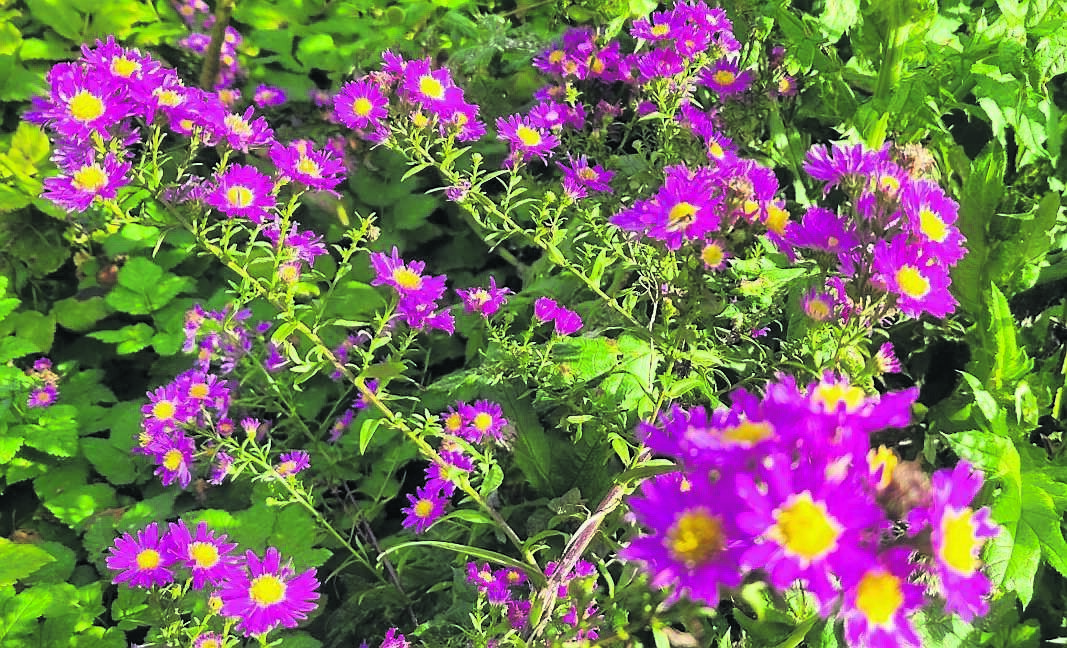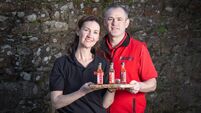In the Garden: Get planting, planning, and pruning!

Salvia ‘Royal Bumble’ is one of the hardier salvias, but still no harm to take a few cuttings now as insurance
ALL of the garden visiting over the last few weeks has provided plenty of inspiration for autumn and winter jobs, and plans for changes over the next few months.
The garden is ever-evolving and our work is never finished, and sometimes we do not even really consider it work!
It is interesting visiting different gardens and admiring beautifully designed seating areas and places to sit and relax which the owners rarely use!
In our own gardens, we are constantly working through the different seasons, getting through the jobs that need to be done at different times of the year, and planning improvements and new plantings.
Autumn is a season like no other, as nature starts to wind down in preparation for winter shutdown.
The leaves are coming down at a pace now due to wind and rain rather than lower temperatures, and the season for planting trees and shrubs is almost upon us.
For now, there is plenty still to forage in the hedgerows with berries of rowan, holly, whitethorn, rosa rugosa - and there are even some blackberries still to be seen.
There is still plenty of herbaceous colour in the garden, with asters lighting up the borders along with sedums and anemones.
Ornamental grasses such as miscanthus, pennisetum and molina all come into their own over the autumn months, with their foliage changing colour and the seed heads drying out and blowing gently in the wind (on a calm day!).
It has been very mild up until now, and it shows in the lush green growth of the grass that has not had a serious frost to contend with just yet.
Having defined seasons is a good thing as it halts growth and plants are forced to rest a-while until conditions for growth are once again favourable.
Autumn and winter are great times for planning and renovations in the garden. Also, plenty of pruning that can be undertaken from now on to bring the garden back under control in areas where it might have become overgrown.
Start with wall climbers such as roses to ensure that wind rock does not damage the plants that have put on lots of growth over the growing season.
It is spring bulb planting time of the year again and there is no better occupation now that you will congratulate yourself for come February, March and April, when the much-anticipated pops of colour will begin to appear.
Crocus, chionodoxa, snowdrop and iris are some of the best and earliest to appear in February and March.
Crocus will naturalise well in grass areas and their cheery array of colours arising among the grass will warm the heart on a cold spring morning. They also provide valuable nectar and pollen for early flying bees emerging in spring.

Snowdrops are best planted in the green after flowering as the bulbs are small and dry out quickly, so results from planting dried bulbs can be patchy.
Tulips are a great favourite for early colour and there are so many dazzling colours to choose from. Generally, they flower best in their first year, with bulbs dividing and producing more leafy growth the following year.
Our wet climate can result in a lot of tulip bulbs rotting in the soil also, so best flowering results are obtained from newly-planted bulbs.
Planting bulbs in the autumn does require a certain amount of clearing to be done so that the soil can be dug, and this can work well to get some clearance done in the garden before the weather conditions turn making working the soil difficult.
A good general rule is to plant bulbs at about 2.5 times their own depth, so if a bulb is 5cm in size the plant it 12.5cm deep.
Before the temperatures do drop, it is a good idea to take cuttings of tender plants such as salvias, fuchsias and dahlias and bring them indoors to a glasshouse, polytunnel or cold frame to over the winter.
Pelargoniums and any other tender bedding plants like plectranthus, bananna and canna will benefit from being brought indoors before it gets too cold and stresses plants.
Bringing them under cover and keeping watering to a minimum will ensure they come through the winter and they can be potted and divided if necessary next spring before planting out.
With Halloween around the corner, it is time to start harvesting those pumpkins and bringing them indoors to cure the skin so that they will store for longer.
When harvesting them, leave a stem on top and do not use the stem to carry them as it may break off, and they store better and longer with the stem intact on top.
They make for a great autumn display and are also great in soups and pies.
Kate Ryan wrote a lovely article for The Echo on Tuesday about the best places to pick pumpkins in Cork - find it online at EchoLive.ie

Plant of the Week
Symphytriochum, formally known as asters, are having their time in the sun right now when it makes an appearance.
It is great when we get some sunny, dry weather in autumn so that they can bask and attract plenty of butterflies and bees to the garden to feed on the nectar and pollen that the flowers have on offer
. They are available in a wide range of colours, with the most common colour being in varying shades of blue and purple.
Symphyotrichum ‘Carmen’ produces deep pink flowers with yellow centres, providing a vibrant change from shades of blue. The flowering stems get to about 60cm tall and will grow best in full sun in a good fertile, free-draining soil.







 App?
App?


